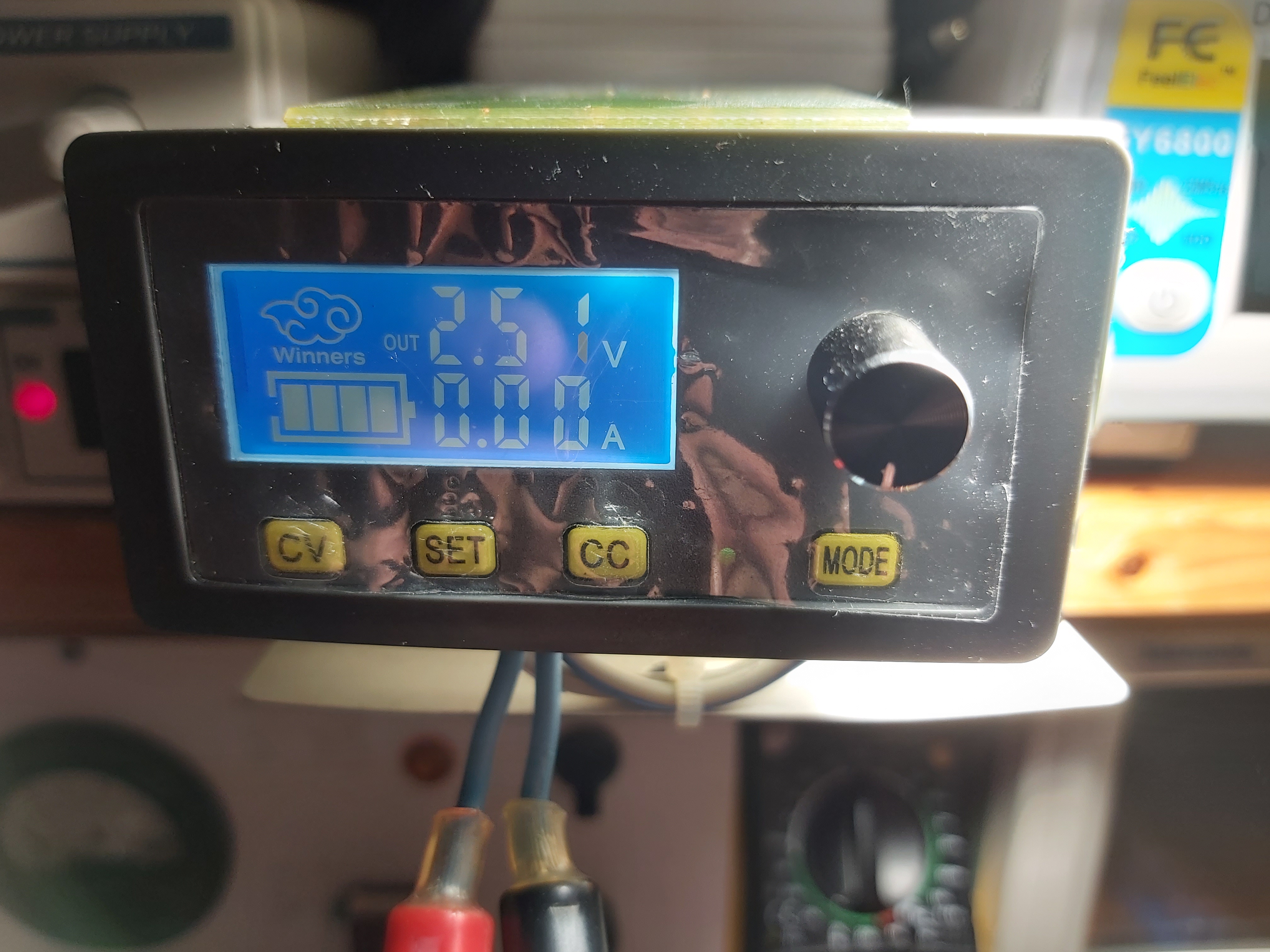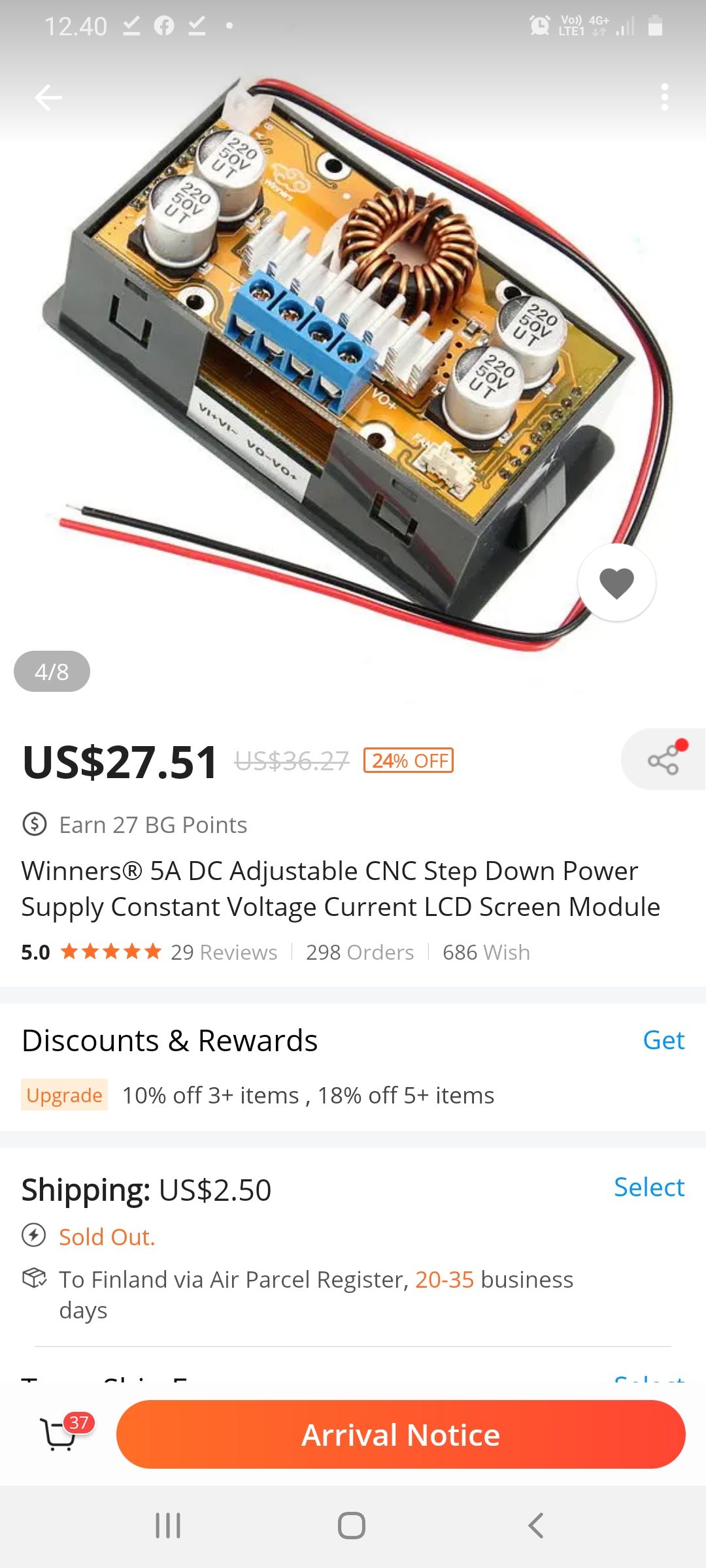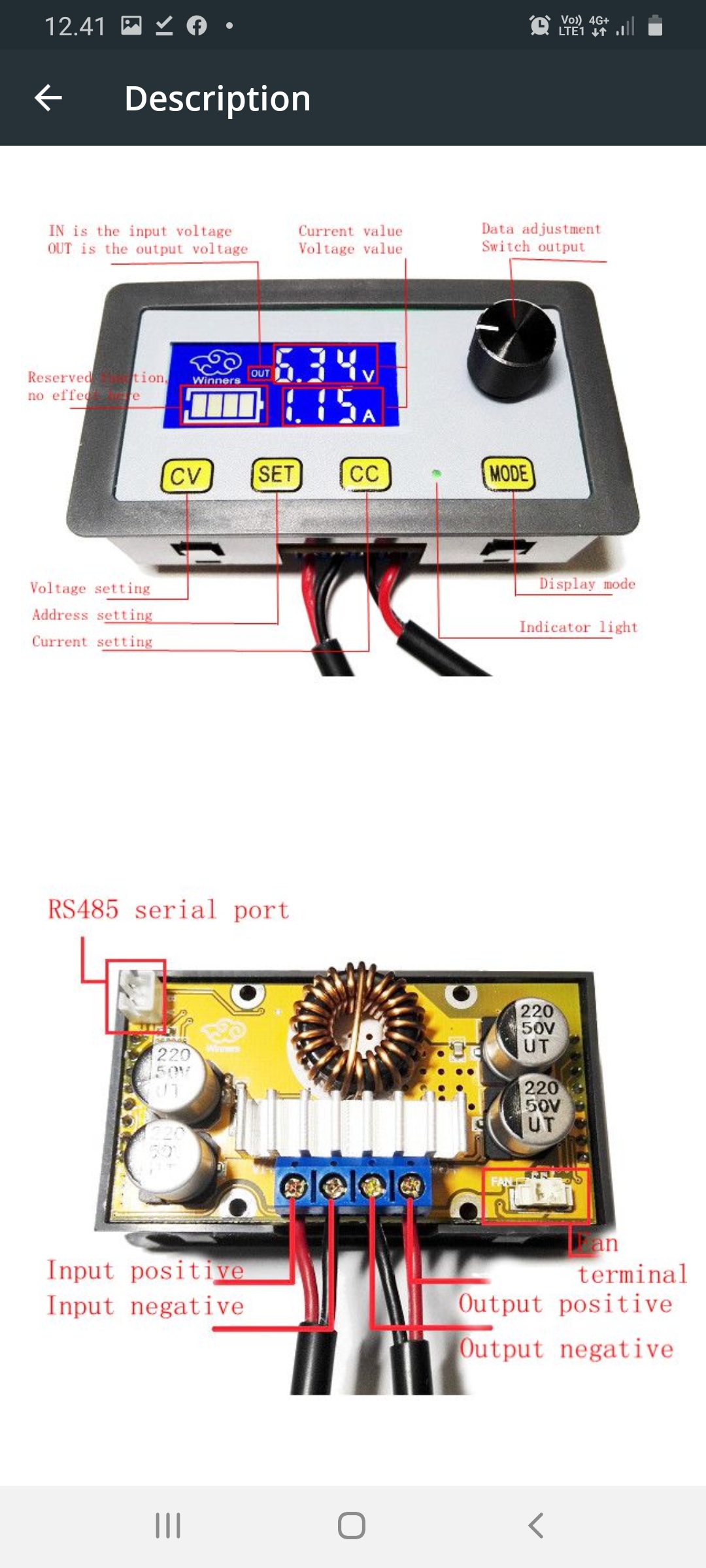I had one DIY laboratory power supply that has served me well for a long time, but there are testes where I need another laboratory power supply. Instead of building a traditional power supply with linear regulator and large heatsink, I went to another route: build one from switch mode power supply and adjustable switch mode regulator.
Transformer + linear regulator is quite simple on circuit level that could be understood. Gives very clean output voltage. The downside is that efficiency is not very good and you need a heatsink.
A SMPSU has good efficiency but somewhat noisier output. SMPSU is very complicated at circuit level. To get idea of complications take look at the article at https://www.epanorama.net/blog/2018/10/30/switched-mode-power-supply-tutorials/
But you can build variable SMPSU best from ready made modules. Take one fixed voltage SMPSU and connect it to suitable swiching regulator. This is a good way to get wide output voltage range and even current regulation if you select module that has that also.
I had earlier tested DC-DC Step Down Power Supply Adjustable Module With LCD Display With Housing Case module, but this time I wanted more features like adjustable current limiting.
This time I wanted more features than just voltage control. I wanted both the voltage and current limiting to be adjustable. I looked for a suitable module to help to built the power supply I wanted. I decided to order Winners® 5A DC Adjustable CNC Step Down Power Supply Constant Voltage Current LCD Screen Module Module Board from banggood.com. This module can give out 0-32V output up to 5A current.
Winners® 5A DC Adjustable CNC Step Down Power Supply Constant Voltage Current LCD Screen Module Module Board is available in two versions: With MODBUS and without MODBUS. I selected the one without MODBUS because lack of documentation and only Chinese language control program was available. MODBUS would have been useful if there would have been usage documentation and/or practical control software.
Product page
Optional:
Type 1: CNC power supply version
Type 2: CNC power supply Modbus version
Feature:
Input voltage: 6V-32V
Output voltage: 0-32V continuously adjustable (can only be used as step-down module, the input must be greater than the output 1V or more)
Output current: Adjustable, the maximum 5A (if temperature over 60 degrees, please strengthen the cooling, there are reserved fan installation location and terminal blocks!)
Output power: Up to 160W (recommended in the use of 120W, large pressure difference, please reduce the power)
Operating temperature: -10 to +75 degrees (Note the use of power tube temperature, exceed the temperature please strengthen the cooling, there are reserved fan installation location and terminal)
Resolution accuracy: Voltage 0.01V, Current 0.01A
Conversion efficiency: up to 95%
Short circuit protection: Yes, constant current the current setting of constant current value
Input Anti-Reversed: Yes
Output reverse flow: None, for charging please add a diode!
Wiring method: Terminal VI + for the input positive, VO + for the output positive
Module size: 79mm x 43mm x 46mm (L*W*H)
Hole size: 76mm x 39mm (L*W)
Weight: 75g
Package includes:
1 x Adjustable CNC Step-down Power Supply
Setting description:
Output voltage setting: short press “CV” key, enter the voltage setting mode, turn the potentiometer to adjust the current voltage, press the potentiometer can switch to adjust voltage value, after adjust short press CV “key to save and exit.
Output current setting: short press “CV” key, enter the current setting mode, turn the potentiometer to adjust the current value, press the potentiometer can switch to adjust voltage value, after adjust short press CV “key to save and exit. (note that when constant current, indicator will be turned to red, constant current adjustable current, the actual load output current must be greater than the set current to the constant current mode, otherwise is working as constant voltage state.)
Here is the connection diagram from product page.
I used a ready a made cased 230V AC mains powered AC/DC power supply that gave out 24V at 2.3A current. It was ready make cased power supply module originally used by some electronic device (Televerket MODEL PS90).
When I connected the power supply regulator module, I got a nice adjustable laboratory power supply. The module I bought worked as I wanted it to work. With this PSU I could get over 2A at 24V and at voltages below around 10V I could get full 5A.
MODBUS:
Even though I had ordered a module without MODBUS, it seem that the module I received could have MODBUS support in it. The circuit board has connector for RS485 signals and adjustment menu seems to have MODBUS settings on it. I have not tested the MODBUS communications, but I collected here some information on the MODBUS on this module I found on Internet.
The the software for MODBUS control is available only in Chinese language. It would be nice to have software in English language, preferably with source code and a map of the Modbus registers.
Page https://www.italianproductshub.com/Elec/winners-5a-dc-adjustable-cnc-step-down-power-supply-constant-voltage-current-lcd-screen-module says:
Modbus address setting (Type 2): short press “SET” key, enter the address setting mode -Id, the default is 1, turn the potentiometer to adjust the current address, range is 1-255, after adjustment and then press the “SET” key to save and exit, you can also set the address through the host computer software.
VERDICT
This is a very good power supply… Very efficient and accurate. Works exactly I expected. This power supply regulator is a good mid-range product, very compact in size. It has a good price / performance ratio. The display is useful. It can be used to build a laboratory power supply that is necessary in every laboratory!
Be warned that the provided instructions are incomplete and sometimes somewhat misleading. The current limit setting is not always very accurate.



4 Comments
Tomi Engdahl says:
Bench Supplies Get Smaller Thanks To USB-C
https://hackaday.com/2020/10/19/bench-supplies-get-smaller-thanks-to-usb-c/
Bench power supplies are an indispensable tool when prototyping electronics. Being able to set custom voltages and having some sort of current limiting feature are key to making sure that the smoke stays inside all of the parts. Buying a modern bench supply might be a little too expensive though, and converting an ATX power supply can be janky and unreliable. Thanks to the miracle of USB-C, though, you can build your own fully-featured benchtop power supply like [Brian] did without taking up hardly any space, and for only around $12.
USB-C can be used to deliver up to 100W but is limited to a few set voltage levels. For voltages that USB-C doesn’t support, [Brian] turns to an inexpensive ZK-4KX buck-boost DC-DC converter that allows for millivolt-level precision for his supply’s output.
https://www.youtube.com/watch?v=Xdq6dzH26QY
Tomi Engdahl says:
https://www.ls-homeprojects.co.uk/dps3005-psu-module-and-modbus-rtu-python-arduino/
DPS3005 PSU Module and MODBUS RTU Python & Arduino
I recently came across a DPS3005 PSU Module with PC control option , i have used similar modules before in a bench power supply and was impressed with the results . With the launch of a new version that included PC control i decided to order one ! (Banggood.com)
The PC / bluetooth was not mentioned in the supplied instructions and the pc software (windows 7+ only) was available from the sellers listing and also Manufacturers Youtube Channel.
Without giving up and i decided to look on the manufacture’s download link and found a interface datasheet, all in Chinese . Using google translate i was able to see the command set and the interface was basically listed as Modbus Rtu, rs232,9600 baud and slave address 1.
I have no experience with modbus at all and had to do a bit of research to understand this very basics .
The following functions were listed as supported in the datasheet:
0×03 – Read data from one or more registers
0×06 – Write a single register
0×10 – Write multiple registers
basic Functions extacted from datasheet , needed for examples below
Voltage set – Register 0×00
Current set – Register 0×01
Voltage measured – Register 0×02
Current measured – Register 0×03
power on – Register 0×04
Loads more see manufactures datasheet for more info…
# DPS3005 MODBUS Example By Luke (www.ls-homeprojects.co.uk)
# Free to use this code how you like but please link my site
# Requires minimalmodbus library from: https://github.com/pyhys/minimalmodbus
import minimalmodbus
instrument = minimalmodbus.Instrument(‘COM4′, 1) # port name, slave address (in decimal)
instrument.serial.port # this is the serial port name
instrument.serial.baudrate = 9600 # Baud rate 9600 as listed in doc
instrument.serial.bytesize = 8
instrument.serial.timeout = 0.5 # This had to be increased from the default setting else it did not work !
instrument.mode = minimalmodbus.MODE_RTU #RTU mode
print instrument.read_register(2, 2) #read a range of 16-bit registers starting at register 2 to 3 (measured voltage and current)
Tomi Engdahl says:
https://www.elecbee.com/en-27166-5A-DC-Adjustable-CNC-Step-Down-Power-Supply-Constant-Voltage-Current-LCD-Screen-Module
Tomi Engdahl says:
https://usa.banggood.com/FandB-WINNERS-WDP5050-50A-DC-LCD-Adjustable-Buck-Power-Supply-Module-with-Constant-Voltage-and-Current-Support-Modbus-p-1846054.html?cur_warehouse=CN